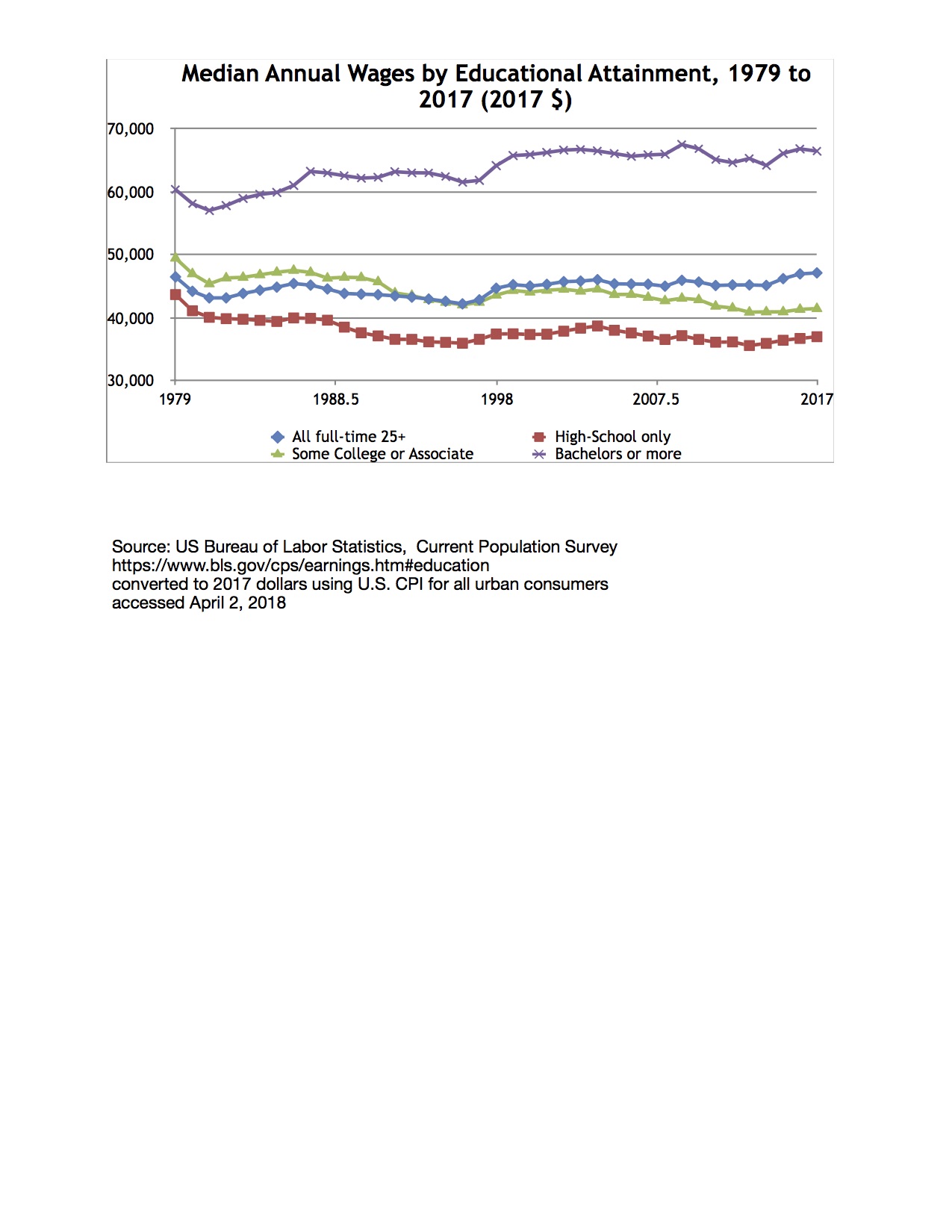The chart below makes clear, once again, that those with a four-year degree or more earn the highest wages. And that advantage is ![]() growing. Unabated from 1979 through 2017.
growing. Unabated from 1979 through 2017.
This data also make clear that the demand for those with some college or an associate’s degree is declining, not expanding, as conventional wisdom has it. We all learned that price (in this case wages) is what balances supply and demand. Price goes up when there is more demand than supply. It goes down when there is more supply than demand. The price to employ those with some college or an associates degree has been declining for almost four decades.
In 1979 the median full-time worker who had an associate’s degree or some college education was earning slightly more (6.4 percent) than the typical full-time worker ($49,510 compared to $46,526), and the typical person with only a high school degree was only earning slightly less (6.0 percent) than the median full-time wage earner ($43,716 compared to $46,526). So if you went to college and didn’t get a degree or earned an associate’s degree you were slightly above average in terms of earnings and if you only completed high school you would be slightly below average.
So not only did the median worker with just a high school degree and an associate’s degree or some college see their real earnings decline (real median wages declined by 15.3% for those with just a high school degree and 16.2% for those with some college or an associate’s degree between 1979 and 2017), but they really fell out of the middle class into the lower middle class. The premium for getting an associate’s degree or some college education compared to a high school degree remains about the same (12.1 percent in 2017 compared to 13.3 percent in 1979), so the typical individual is still better off going to college even if they don’t earn a bachelor’s degree, but that education will no longer allow them to be solidly in the middle class.
The data also demonstrates why, with what is viewed as a strong economy, so many people are dissatisfied. Stagnant or declining wages for nearly four decades. Where the winners are concentrated in the one third or so of workers who have BAs or more. Although even their median wages have stagnated since 1999.








